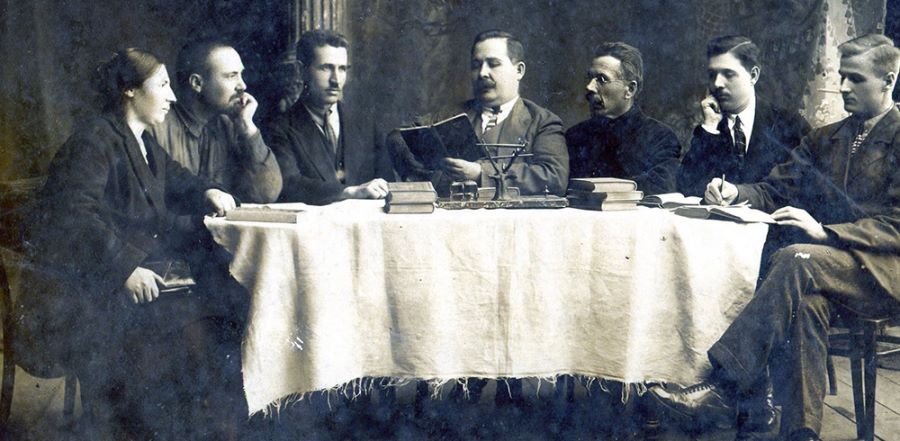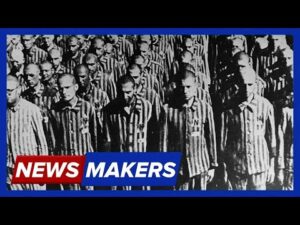Gustav H. Schmidt Describes the Horror of Soviet Persecution of Pentecostals in the 1930s
This Week in AG History — August 04, 1934 By Darrin J. RodgersOriginally published on AG-News, 3 August 2023 Following the Russian Revolution of 1917, the newly formed Soviet Union launched a campaign to eradicate Christianity within its borders. It … Continue reading

This Week in AG History — August 04, 1934
By Darrin J. Rodgers
Originally published on AG-News, 3 August 2023
Following the Russian Revolution of 1917, the newly formed Soviet Union launched a campaign to eradicate Christianity within its borders. It relentlessly pursued a policy of militant atheism. Clergy were imprisoned or murdered, churches were demolished or converted to other uses, and an intensive propaganda campaign sought to convince people that Christianity was a harmful superstition. It was in this context of persecution that the Pentecostal movement among Slavs (peoples of the former Soviet Union) formed its identity.
The Pentecostal movement found fertile soil in Russia. Early evangelists, impacted by the Welsh Revival (1904-1905) and the Azusa Street Revival (1906-1909), first brought the Pentecostal movement to Russia a decade before the 1917 revolution. Prior to the revolution, the Orthodox church occupied a favored place in society and cooperated with the czarist government to persecute both political insurgents and religious minorities, including Pentecostals.
Following the revolution, communist government officials began persecuting their former persecutors, seeking to stamp out the Orthodox church. The government soon targeted other churches, including Baptists, Mennonites, Seventh Day Adventists, and Pentecostals.
While the Soviet Union ostensibly guaranteed its citizens the “freedom of religion,” this freedom only allowed individuals the right to believe and not the right to practice their faith. If Christians practiced their faith, they became lawbreakers and were subject to fines, imprisonment, or exile to Siberia.
Laws forbade Christians to hold church services, to provide religious instruction to their children, or to share the gospel. The government further marginalized Christians by excluding them from professional and government positions.
Gustav H. Schmidt, a pioneer Assemblies of God missionary to Poland, wrote a series of three articles, published in the Pentecostal Evangel in 1934, which described the suffering endured by Pentecostals in the Soviet Union.
Slavic Pentecostals developed a deep faith burnished by persecution. Schmidt wrote, “In those prisons and places of exile matured that heroism for Christ which shrinks from no difficulties.” The communists mistakenly believed they could quash the Christian faith by destroying church buildings and imprisoning pastors.
Prisons became the proving grounds for Christian leaders. According to Schmidt, “there were many thousands of true believers who had been trained in the school of suffering and persecution.”
These Pentecostals, Schmidt wrote, became “a valiant army of gospel workers through whose testimony and preaching a mighty revival soon swept over the vast plains of Russia.” By 1930, approximately 500 Pentecostal churches had been organized in Russia and Ukraine. Each convert to Christ knew that their decision would cost them dearly.
One of the most insidious Soviet plans, according to Schmidt, was the insistence that the government, and not the parents, be in charge of the education of the youth. Government schools, hostile to Christianity, attempted to undermine the faith of the parents.
Schmidt wrote, “A mother who sends her children to school knows that they will be taught to hate God, and Christianity will be presented to them in such a way as to make it appear ridiculous to them and this in an endeavor to cause them to despise the very idea of religion.”
Laws prohibited parents from providing religious teaching to their own children. But many Christian parents obeyed a higher law. Schmidt suggested that “a mother in Russia who loves Jesus Christ will, in spite of such rules, teach her child to pray and to live a life of respect and godliness.”
Teachers would ask young students, who were likely to tell the truth, whether their parents taught them about religion. In this way, many students unwittingly let the government know that their parents were committing treason.
Another attempt to destroy families and the freedom of conscience, according to Schmidt, was the collectivization of agriculture. Eighty percent of Russians lived on farms, so when the government took over all farms, it made farmers into slaves of the state. This was an attempt to “destroy the (peasant’s) home and rob him of his privacy.” Agricultural workers were forced to live in communal buildings, their children were taken away, and it was difficult for people to practice their faith without being noticed.
“In Russia the follower of Christ is constantly beset with trouble and is always in danger,” Schmidt recounted. “He has to be ready to be torn away from his loved ones any time, Bolshevik police will break into a home during the night, after twelve o’clock maybe and bid the husband, father, or son to accompany them, and with a bleeding and broken heart they bid their loved ones a hurried last goodbye.”
Prison sentences, consisting of hard labor, frequently lasted 10 or 20 years. Many died within several years due to malnutrition and disease.
Persecution separated consecrated believers from nominal Christians. Schmidt wrote, “Anyone who is zealous for Jesus in Russia is marked for arrest and this makes Christian activity hazardous. Therefore we find no half-hearted Christians in Russia . . . Such who are not fully consecrated will not be able to stand the strain for any length of time but will step over into the enemy’s camp.”
Despite great dangers confronting Christians, the Slavic church saw no shortage of leaders. Unpaid elders led the congregations, which met in homes. Elders took turns preaching and, when one was arrested, another took his place. Congregational leaders did not receive qualification from a Bible college (there were none), but from their willingness to suffer and die for Christ.
Soviet authorities predicted that every church would be destroyed by May 1, 1937. But Schmidt responded that the true church does not consist of buildings. There are “real Christians in Russia,” he wrote, and they “are dying for their faith . . . We know that the Bolshevists will never be able to destroy Christianity.”
Communist persecution not only failed to destroy Christianity; it helped to create a very strong and vibrant Pentecostal movement in the former Soviet Union. Today, there are over 1.2 million Pentecostals in the former Soviet Union in churches that are in a fraternal relationship with Assemblies of God World Missions.
Beginning in the late 1980s, when Mikhail Gorbachev began to allow persecuted religious minorities to emigrate, many put down roots in America. An estimated 500,000 Slavic Pentecostals from this recent wave of immigration now live in the United States. While most are in congregations that are either independent or loosely affiliated with one of several Slavic Pentecostal unions, many are deciding to join the Assemblies of God.
In 2002, several Slavic Pentecostal churches in California joined the Assemblies of God and formed the Slavic Fellowship, which provided both a structure for Slavs to organize themselves within the Assemblies of God and also representation on the Fellowship’s General Presbytery. In September 2008, the leaders of the Slavic Fellowship, in addition to other Slavic Pentecostals interested in affiliating with the Assemblies of God, came together in Renton, Washington, and organized the National Slavic District. The district gives greater strength and visibility to Slavic Pentecostals, both within the Assemblies of God and within the broader society.
The Slavs, with deep faith burnished by decades of persecution, are poised to provide leadership within the broader church. And their leadership could not have come at a better time, as they have already proven their mettle in a culture that is hostile to biblical values.
Read the series of three articles by Gustav H. Schmidt, “Bolshevism Battling Against Christianity,” in the following issues of the Pentecostal Evangel:
Click here now for the July 21, 1934, issue.
Click here for the July 28, 1934, issue.
Click here for the Aug. 4, 1934, issue.
Also featured in the Aug. 4, 1934, issue:
• “The Merry Heart,” by Donald Gee
• “The Secret of an Abiding Pentecost,” by Leonard Gittings
• “Spoiled Christians,” by E.F.M. Staudt
And many more!
Click here to read the Aug. 4, 1934, issue now.
Pentecostal Evangel archived editions courtesy of the Flower Pentecostal Heritage Center.
Do you have Pentecostal historical materials that should be preserved? Please consider depositing these materials at the Flower Pentecostal Heritage Center (FPHC). The FPHC, located in the Assemblies of God national offices, is the largest Pentecostal archive in the world. We would like to preserve and make your treasures accessible to those who write the history books.
Flower Pentecostal Heritage Center
1445 North Boonville Avenue
Springfield, Missouri 65802 USA
Phone: 417.862.1447 ext. 4400
Toll Free: 877.840.5200
Email: archives@ag.org
Website: www.iFPHC.org



